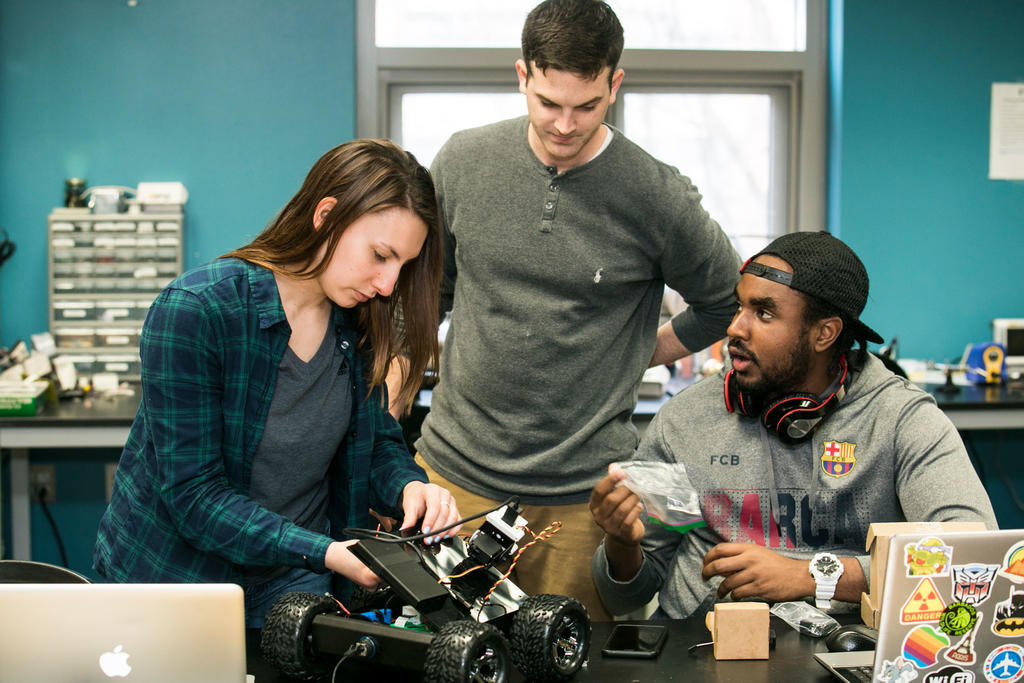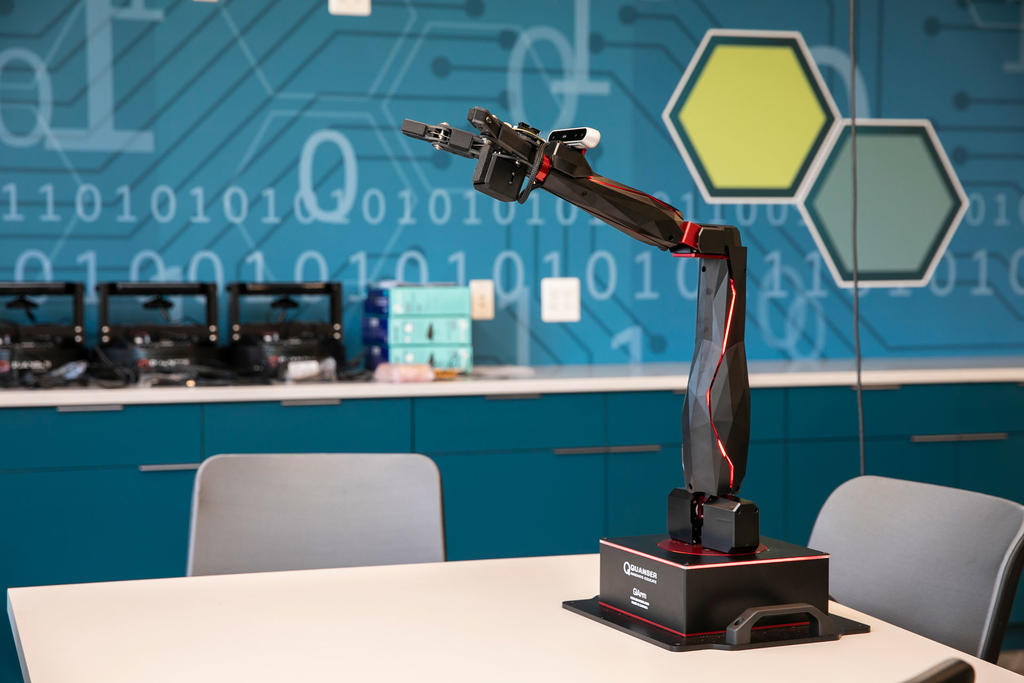Teaching robots to think, see, and do
Robots will go where people can't, inspecting bridges, venturing into faltering nuclear power plants, and exploring space. Mason students and faculty collaborate to form robotics and autonomous systems that will take the next step in human-robot technology.

Three students in the mechanical engineering department build a storm drain robot for their senior capstone. Photo by Ron Aira/Creative Services.
Read the latest news in robotics and autonomous systems at Mason
- April 16, 2024
- April 9, 2024
- March 4, 2024
- February 29, 2024
- February 14, 2024

A robotic arm in the Commonwealth Cyber Initiative Living Innovation Lab in Mason Square (formerly Arlington Campus). Photo by Ron Aira/Creative Services.

Here at Mason, robotics are integrated into our campus life. These robots from Starship provide food delivery services for faculty, staff, and students. Photo by Sierra Guard/Creative Services.
The CEC's robotics and autonomous systems are a joint effort
Our research in robotics and autonomous systems exists because of the collaborative effort of the nine departments working together to find solutions to problems and create new technologies in the field.
- Civil, Environmental, and Infrastructure Engineering
- Systems Engineering and Operations Research
- Computer Science
- Mechanical Engineering
- Electrical and Computer Engineering
- C4I
- Cyber Security Engineering
- Statistics
- Joint collaboration between mechanical, computer science, and electrical and computer engineering
More than 50 faculty members collaborate on research and explore robotics and autonomous systems that will improve manufacturing capabilities, enhance healthcare, and inspect remote areas.
Top faculty in robotics research




Main capability areas
The team of faculty that make up the robotics and autonomous systems group is focusing on four areas of research: responsible robotics, embodied intelligence, real-world systems, and collaborative robotics. They are asking questions and finding solutions to problems in the future of robotic activity and intelligence in how it connects with human behavior.
Responsible Robotics
How will robots with increasing capabilities be trusted? Should they be?
- ethical fair and trustworthy systems
- privacy, law, and AI
- security and privacy
- human and autonomous interactions
Embodied Intelligence
How can we improve the capabilities of robot systems?
- sensing and perception
- learning, planning, and reasoning
- bioinspired intelligence
Real-world Systems
Mason robots outside the lab solve real-problems
- robots in the wild
- sensor and actuator design
- soft/agile/tactile robots
- dynamics and control
Collaborative Robotics
The whole ecosystem of robots and/or humans should be more (or even different) than the sum of the parts
- human-machine teaming
- multi-robot teaming
- networked systems
- swarming
